MARIANO TOMATISWONDER INJECTORItalian writer and magician
|
 Fulfilling archetypal dreamsTodd Reichert’s wing flapping aircraft Posted on saturday 16 august 2014• Written by Mariano TomatisBefore leaving home for San Francisco by airplane I cited Louis C.K.’s routine about the (forgotten) joy of “partaking the miracle of human flight.” Yet I couldn’t imagine that at the Science Foo 2014 I would have encountered someone that actually had partaken the experience more than anyone else! I met Todd Reichert at Googleplex because our exhibits were very close and he explained me that his dream was to fly simply flapping wings. In order to fulfill such an archetypical desire, with a group of University of Toronto students he designed a Human-Powered Ornithopter — “The Snowbird”. Tested on 2 August 2010, the contraption enabled him to fly for around 20 seconds, covering approximately 150 meters at 25 km/h — powered solely by the power of his muscles. The video of the impressive performance elicited a number of loud wows! and can be seen here: Discover the Human-Powered Ornithopter Project clicking here. Magic & BooksFour bookstores with great and cheap books in San Francisco Posted on friday 15 august 2014• Written by Mariano TomatisLooking for good and affordable books in San Francisco? Here is the list of my favourite bookstores in the city (and the books I have serendipitously found there!) Book Bay Fort Mason A public library selling books! Location: Fort Mason Center, Marina Blvd, San Francisco, CA 94123. 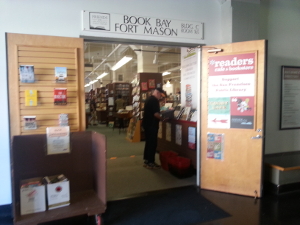 A former United States Army port alongside San Francisco Bay, whose buildings now host Theatres, Museums, Cafeterias, art campus... and a bookstore. And what a bookstore! The “Book Bay Fort Mason” is indistinguishable from a public library, with books sorted with care, tables available for attenders and cable connections for plugging laptops. The only difference is that the books can be bought, and the prices are very low. The bookstore is managed by the Friends of the San Francisco Public Library, “a nonprofit organization that advocates, fundraises, and provides support for the San Francisco Public Library and related literary and educational programs.” All the books coming from donors are sold in this bookstore and in a smaller one, located inside the San Francisco Public Library (see the “Readers Bookstore at the Main” below). Serendipitously found there: James Randi, “The Magic of Uri Geller”, Ballatine Books, 1975. (Paperback Edition: USD 1,00.) — The sharp and spicy analysis of Uri Geller’s psychic powers, written by the world-famous debunker of fake mediums — the magician James Randi. The book can also be read as an encyclopedia of tricks for gaining a supernatural status. One of the stories told by Randi focuses on a curious Italian connection: aware of the role of the “aura”, Geller faked a photograph of himself with Sophia Loren for the Israeli newspapers! 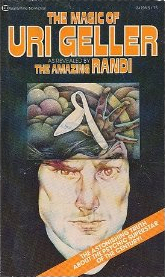  Readers Bookstore at the Main The finest and cheapest gift shop in Frisco! Location: San Francisco Public Library, 30 Grove St, San Francisco, CA 94102.  The smaller bookstore managed by the Friends of the San Francisco Public Library (see the “Book Bay Fort Mason” above) is hosted inside the main building of the Public Library, where a visitor would expect to find the museum gift shop. Aside from (cheap) used books, it actually offers many elegant gadgets derived from old illustrated volumes — badges, bookmarks, postcards, notebooks. The perfect place where to buy gifts for book lovers, funding “a collection of committed, caring individuals who share a common vision of a superior free public library accessible by all.” Serendipitously found there: Lewis Hyde, “Trickster Makes This World: Mischief, Myth and Art”, Canongate, 2008 (Paperback Edition: USD 6,00.) — A wide-ranging collection of stories about tricksters from all over the world — from Prometheus to Marcel Duchamp — revealing their role of boundary-crossers: they live on the edges of the society, playing on its boundaries and always challenging the criteria to define what’s in and what’s out. 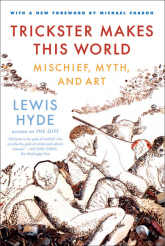  Bound Together Anarchist Collective Bookstore A truly paradise for culture jammers and situationists! Location: 1369 Haight St, San Francisco, CA 94117. 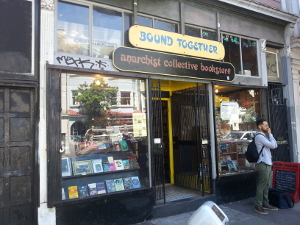 Run by volunteers, you cannot expect that it is always open. I insisted returning three times there, but it was worth the visit! The widest and eye-opening collection of counter-culture books I have ever seen, in the very center of the Haight district — the place where the legendary Summer of Love took place. It is managed by extremely generous and cultured people — and even the musical choice is stunning: during my visit, a Gregorian choir created a surprising contrast with the hippie mood of the surrounding area. The perfect place to sit and have a coffee, waiting for the opening, is “Coffee to the People” (1206 Masonic Ave, San Francisco, CA 94117): it is just behind the corner and on its walls there are hundreds of exquisite radical slogans (like “A book worth banning is a book worth reading”.) Serendipitously found there: Kevin Evans, Carrie Galbraith, John Law, “Tales of the San Francisco Cacophony Society”, Last Gasp, 2013. — The antology collects pranks, jokes and “situations” created in San Francisco by members of the Cacophony Society, “a randomly gathered network of free spirits united in the pursuit of experiences beyond the pale of mainstream society.” A must read for culture-jamming-enthusiasts like me. 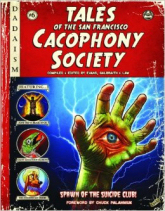  Bibliohead Bookstore When you feel nostalgic of good old “search engines” in-flesh-and-bones Location: 334 Gough St, San Francisco, CA 94102.  Located a few blocks from the City Hall, it is run by a woman with a surprising, meticulous knowledge of all the titles in the bookstore. Just test her skill with the most unusual requests and you will immediately feel nostalgic of the times before digital search engines. After my requests for books about hypnosis, she took out of the shelves two volumes — the first by Milton Erickson, the second by some New Age quack — emphasizing the greater accuracy of the psychiatrist. Amazon will never provide such an experience. Serendipitously found there: Hereward Carrington, “The American Seances With Eusapia Palladino”, Garrett Publications, 1954. (First Edition: USD 8,00.) — The detailed chronicle of the seances with the Italian medium Eusapia Palladino organized in the US by Hereward Carrington. In 1908, during a trip to Italy, the researcher witnessed the miracles performed by the woman and decided to fund her American tour. He was then disappointed when unexpectedly he glimpsed two magic tricks used by Eusapia to create the illusion of supernatural powers. 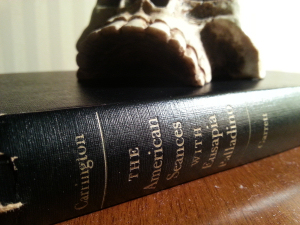 Failure Is An OptionUnearthing failures in a land of winners Posted on thursday 14 august 2014• Written by Mariano TomatisChanging perspectives is the main road to the discovery of hidden, valuable stories. During a stop on my way to San Francisco, at the Detroit Metro Airport I stumbled into Gene Kranz’s famous motto “Failure Is Not an Option” (1) on a teachforamerica.org billboard. I immediately took note of the quote because — on the contrary — my trip in the States was focused on finding, sharing and celebrating shining, epic, memorable failures. Banned from the Banned Toy Museum I spent my first night in Burlingame, where I had planned to visit the local Banned Toy Museum, displaying toys taken off the market because they were a serious safety hazard, or because they were offensive.  The Banned Toy Museum is hosted inside the Museum of Pez Memorabilia, 214 California Drive, Burlingame (CA).  Unfortunately it was close for holidays — and it was sadly ironic to be “banned from the Banned Toy Museum”! I would have liked to honour Steve the Tramp — a veritable symbol of failure: the action figure from the 1990 film Dick Tracy was pulled off the shelves due to its insulting package. Being a homeless, Steve was labeled ignorant bum with cauliflower ears, dirty and scarred from a life on the streets. You’ll smell him before you see him. Banning an already banned figure sounds doubly cruel, and in my wet dreams I see one million Steves assaulting Barbie & Ken’s Glamour Camper, in a lysergic, revolutionary revival of the Matrix Reloaded assault by the Agent Smith and his countless clones. Failure in Science My lightning-talk (ispired by this routine by Pete Holmes) was focused on granting a value to the concept of not-knowing and Stuart Firestein’s (great) session “Failure and its importance to the success of science” dug deeper into the idea of getting an improved and more thoughtful ignorance (SEE HERE HIS AMAZING WORK). Although Magic and Science are very different disciplines, our disclaimers have been strikingly similar. I warned the audience: Don’t get me wrong. I’m not advocating ignorance nor supporting irrationality. When I perform a magic trick, I am offering you an opportunity to foster a detached credulity, that state of mind in which you are ready to don and doff the awareness that it is just an illusion. During an interview on the topic, Stuart noted: But I don’t mean stupidity. I don’t mean dumb. I don’t mean a callow indifference to facts or data or any of that. I mean a really thoughtful kind of ignorance, a case where we just simply don’t have the data. It’s not that you individually are dumb or ignorant, but that the community as a whole hasn’t got the data yet or the data we have doesn’t make sense and this is where the interesting questions are. (2) In reviewing Stuart’s book Ignorance: How it drives science, Brian Clegg commented: The interesting part and the fundamental heart of science is not about what we know, but about what we don’t know and where we want to look next. (3) My beloved spitting preacher At the end of Science Foo Camp 2014 I left Palo Alto to share with some roommates an apartment in San Francisco. The (wonderful) metropolis does not hide its city-for-rich-people status — and in order to unearth its minor stories of failures I have read The Dharma Bums by Jack Kerouac. In its pages I met A big fat woman like Ma Rainey [...] standing there with her legs out-spread howling out a tremendous sermon in a booming voice that kept breaking from speech to blues-singing music, beautiful. (4) Kerouac had met here in Portsmouth Square Plaza, the Chinatown park — a place I visited to pay my respects to the Ma-Rainey-like woman.  Me in Portsmouth Square Plaza, San Francisco (14 August 2014). I liked the outlandish description of her given by the writer: This woman, who was such a great preacher, was not preaching in a church [...] because every now and then she just simply had to go sploosh and spit as hard as she could off to the side in the grass “And I’m tellin you, the Lawd will take care of you if you recognize that you have a new field... Yes!” — and sploosh, she turns and spits about ten feet away a great sploosh of spit. I share Kerouac’s enthusiasm when he confess his friend Japhy: See she couldn’t do that in a church, that’s her flaw as a preacher as far as the churches are concerned but boy have you ever heard a greater preacher? I fell in love with such a woman, whose big heart would have been banned from official churches just because of her inconceivable flaw. And even if her skills had never been recognized at large, I find it difficult to label her preaching as a failure. _________________ (1) Gene Kranz, Failure Is Not An Option: Mission Control from Mercury to Apollo 13 and Beyond, Simon & Schuster, New York 2000. (2) Stuart Firestein: “Ignorance: How It Drives Science”, American University Radio, Washington DC. (4) Jack Kerouac, The Dharma Bums, 1958 (Chapter 16). Art & ScienceForbidden apples and musical bubbles in the art of Charlotte Jarvis Posted on wednesday 13 august 2014• Written by Mariano TomatisTake an apple grown near The Hague (the city housing the International Court of Justice) and spray onto its surface synthetic DNA encoding the Universal Declaration of Human Rights. Then eat the contaminated fruit. 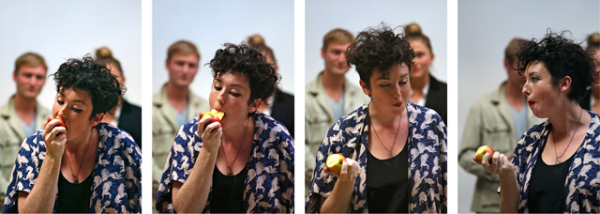 Charlotte Jarvis eating the forbidden apple. Photos by John East. The stunning project “Blighted by Kenning” has been led in 2012 by Charlotte Jarvis in collaboration with the Netherlands Proteomics Centre. I have met Charlotte at Science Foo Camp 2014 in Mountain View during dinner and the day after I have attended her session dedicated to the relationship between Art & Science. 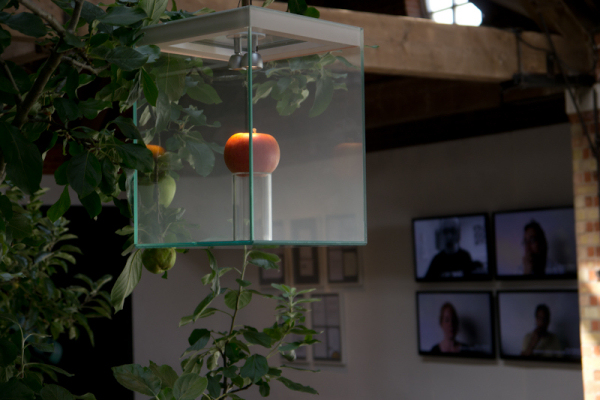 The forbidden fruit. Photo by John East. The best way to write a review about such a surprising performance is to take it a step farther. Inspired by her work, I have created a DNA encoder, an interactive tool encoding the message you want: 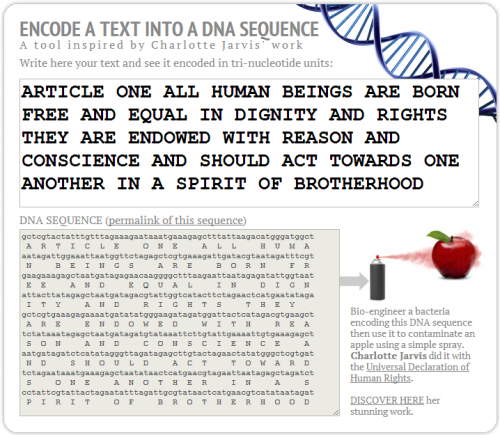 CLICK HERE to access my DNA encoder Use it trying to figure out how to astonish your partner with a contaminated candy, encoding a love poem. During the Science Foo Camp 2014 Charlotte has presented her new project “Music Of The Spheres”. Nick Goldman has developed a bioinformatics technology encoding a musical recording into synthetic DNA. The composer Mira Calix has written a piece of music that has been translated in a sequence of nucleotide units and suspended in soap solution. During the Scifoo session, Charlotte has distributed it in the form of bubble bottles and invited us to blow musical bubbles all together — in a memorable collective ritual.  Charlotte’s bubble bottle I proudly own. As Charlotte explains in the website of the project: The recording will be preserved in the DNA only no other complete version will exist. In order to listen to the complete recording you will need to sequence the DNA — making the music somewhat unaccessible at present. However, as sequencing technologies become more accessible so will the unique piece of music, mirroring the way it is hoped advances in sequencing will unlock the secrets of genomes in the future. Magic & its boundariesCultivating wonder: the contribution by Jason Salavon Posted on tuesday 12 august 2014• Written by Mariano TomatisAccording to Mihaly Csikszentmihalyi, the best way to become involved in a domain deeply enough to reach its boundaries and then push them farther is to develop a good dose of curiosity, wonder, and interest in what things are like and in how they work. (1) For many years, I have perceived Magic as an irredeemable (2) art, doomed to repeat old clichés over and over again, without any possible upgrade. Then I met revolutionary magicians (like Penn & Teller, Max Maven, Derren Brown and Marco Tempest) who pushed its boundaries in totally unexpected directions. I started to work on it just some years ago, with a renewed trust in the potentials of Magic. I was exploring this promising path when, abruptly, I was invited to Science Foo Camp 2014, organised by Nature, Digital Science, O’Reilly and Google at the Googleplex in Mountain View (CA). It has been the perfect context where to cultivate curiosity, wonder, and interest in what things are like and in how they work. I have performed there a lightning-magic-talk (CLICK HERE), shared my work on the first Italian 17th century mind-reading books (CLICK HERE) and returned home with tons of good material to work on: I have met amazing people, discussed about hundreds of potential hybridizations between Magic and other disciplines and I have been literally mesmerised by some of the props shown during the sessions. It’s difficult to decide where to start from. Picking a single aha-moment at random, I was attending a session about Maths and Art, during which Jason Salavon (DISCOVER HERE HIS STUNNING WORKS) described the concept of “amalgamation”: the procedure through which many images are merged into a single one by averaging the colour of each pixel. This reminded me of the most stunning example of amalgamation I have read about in 2002: the one involving four decades of Playboy centerfolds (from 60s to 90s). I was going to share this piece of information with the audience, when he revealed of being himself the author of the Playboy amalgamation!  Jason Salavon, Every Playboy Centerfold, The Decades (normalized) 2002. During a lunch spent together after the session, I have explained Jason that I often use wonder for didactical purposes, and his work on Playboy centerfolds has been very useful during my mathematical lectures: I have often used his images with students, stressing the difference between the statistical concepts of “average” and “median”; citing his work, it was easy to show that — in this specific case — the median image is sexier than the average one (and still more sexier when you use 119 photos instead of 120 for each decade). 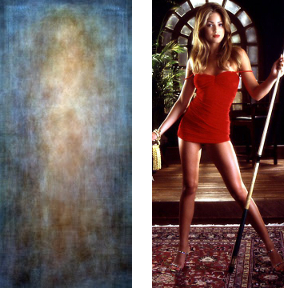 1990s Playboy centerfolds: average (left) vs. median (right). Being Jason an instructor at The School of the Art Institute of Chicago, the discussion with him focused on the most surprising sides of art — from Banksy’s “Exit Through The Giftshop” to Cattelan’s middle finger displayed in Milan’s Piazza Affari — and on the shared idea that Art may be empowered by taking it out of the galleries and museums. The concept is also at the core of our book The Art of Astonishment, focused on the concept of magical experiences designed (and lived) out of a theatrical context, in everyday life. In Italy, the concept has been analysed in the wider framework of Contemporary Art by Alessandro Dal Lago and Serena Giordano, whose books introduce radical ideas on how to bring Art to a higher level by letting it break out of the official places with the aim of upgrading the contexts in which it is presented to the public: a must-read! _________________ (1) Mihaly Csikszentmihalyi, Creativity: The Flow and the Psychology of Discovery & Invention. (2) The term has been suggested me by Filippo Sottile. Google and its loyal armyArtificial paradises from Hasan-i Sabbah to Silicon Valley Posted on monday 11 august 2014• Written by Mariano TomatisMy God, Mae thought. It’s heaven. The opening words of Dave Eggers’ dystopian novel The Circle (set in a fictional West Coast social media corporation) may be used also to describe the impression I had during the three days spent at Googleplex.  But. Take an Italian man, 6000 miles from home. Take the amount of time of three days. Take the idea of being in heaven. No, I’m not referring to me but to Marco Polo (1254-1324). Returning from an expedition to the East, the merchant traveller told Rustichello from Pisa of the experience designed by the charismatic leader Hasan-i Sabbah for his followers. He created a beautiful garden, hidden between two mountains, decorated with flowers and fruits, sumptuous houses and pavilions covered with precious stones. Through this artificial paradise, thanks to a sophisticated plumbing system, flew streams of honey, wine, milk and crystal clear water. The garden was populated by gorgeous girls, who welcomed the visitors with refined foods, sensual dances and mind altering drugs. The place was the earthly replica of the afterlife described by Muhammad: such an accurate illusion that the Saracens of those parts believed that it was Paradise! (1) Sabbah took advantage of it to recruit his army of loyal fighters. After being drugged, the young candidates would wake up in the garden. Here they touched first-handed what the Koran promised as the afterlife, finding it difficult to distinguish the experience from true heaven. The otherworldly experience suddenly stopped after three days, when Sabbah put them to sleep with a dose of opium, causing them to awaken outside of heaven. Dazed and confused, the boys would have done anything to regain that “paradise lost”. And as the sacred texts promised it to those who would have fought to the death, Sabbah was guaranteed a loyal and motivated army. During Science Foo Camp at Googleplex, streams of beer, wine, sodas and crystal clear water flew from automatic distributors, laptops could be borrowed for free, chips and snacks were always available, fresh food delivered at any time and all the available rooms were filled with mind altering ideas. Now that the Camp is over, we feel a bit dazed and confused. A loyal and motivated army in the holy name of The Circle? _________________ (1) Rustichello da Pisa, The Travels of Marco Polo, Book 1, Chapter 23, 1298. Magic & Antiques BooksItalian interactive magic books, back to life Posted on sunday 10 august 2014• Written by Mariano TomatisIf yesterday night at Googleplex you have enjoyed my little magic corner, involving Italian interactive books, you can go deeper in their exploration with these three links: • Andrea Ghisi, The Pastime (Verona 1603) • Andrea Ghisi, The Laberynth (London 1610) • Pietro Millioni, Graceful Thought (Siena 1649) 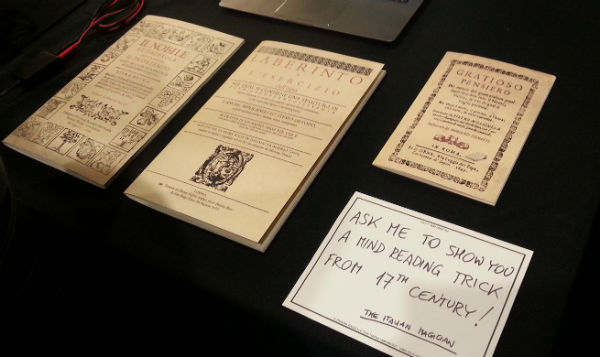 I have restored and digitalised not only the books but also the working method, enabling you to make the experience of a 21th century computer reading your mind using a 17th century technology. Pretty cool, innit? I have also completely mapped the Laberynth, giving a talk on the book that Jorge Luis Borges would have loved a lot. Check here my speech on the topic. Magic & MysteryThe Shortest and Funniest Mesmeric Act Ever... Online Posted on saturday 9 august 2014• Written by Mariano TomatisSlides and text from my lightning talk (given this morning at Googleplex in Mountain View) are now available online clicking here. Enjoy! 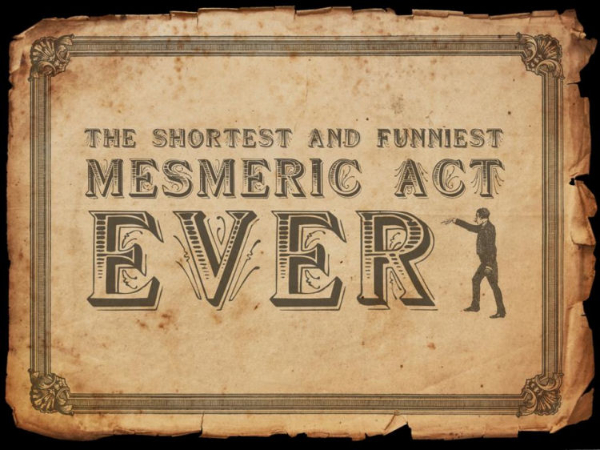 My book L’arte di stupire (“The Art of Amazement”, Sperling&Kupfer, Milan 2014), written with Ferdinando Buscema, is already available in Italian and soon will be published also in the US with a preface by the English magician Derren Brown. Wu Ming Foundation has an English website here. The very ending of the act is an idea by Woody Aragon. Nicolas Bergasse actually leaded a revolutionary group, using Mesmerism to disguise political activities. This magic trick is part of a larger project labeled “Laboratory of Revolutionary Magnetism”, co-authored with Wu Ming Foundation as a transmedial extension of their historical novel The Army of Sleepwalkers (Einaudi, Torino 2014). Airplanes & MiraclesYou’re sitting in a chair in the sky! Posted on thursday 7 august 2014, 1 days before scifoo14 • Written by Mariano TomatisEve of the SciFoo14 on the plane: a good occasion to sharpen the ability of realizing the miracles in which we are immersed — too often taken for granted. Alain De Botton comments on the effect that such an experience would have had on classical painters like Nicolas Poussin: No one thinks it remarkable that somewhere above an ocean we flew past a vast white candy-floss island which would have made a perfect seat for an angel or even God himself in a painting by Piero della Francesca. In the cabin, no one stands up to announce with requisite emphasis that, out of the window, we are flying over a cloud, a matter than would have detained Leonardo and Poussin, Claude and Constable. (1)  Nicolas Poussin, “Hercule au jardin des Hespérides” (detail). Louis C.K.’s whipping irony is another perfect guide to the re-enchantment of the flight. During one of his routines, the American comedian mocks the ungrateful who complain of occasional inconveniences on airplane flights: They’re like: “It was the worst day of my life. First of all we didn’t board for 20 minutes and then we get on the plane and they made us sit there on the runway for forty minutes! We had to sit there.” Oh really? What happened next? Did you fly through the air incredibly like a bird? Did you partake in the miracle of human flight, you non-contributing zero? Wow, you’re flying! It’s amazing! Everybody on every plane should just constantly be going: “Oh my God, wow!” You’re flying, you’re... you’re sitting in a chair in the sky! But it doesn’t go back a lot. And it smells really. You know, here’s the thing. People like they say there’s delays on flights, delays really New York to California in 5 hours. That used to take 30 years to do that and a bunch of you would die on the way there and have a baby! (2) _________________ (1) Alain De Botton, The Art of Travel, Hamish Hamilton, London 2002. (2) Louis C. K., “Everything is amazing and nobody is happy”. Many thanks to my co-author Ferdinando Buscema who signaled me this video. Magic & ZenRe-enchanting airports with the Five Cent Koan Posted on wednesday 6 august 2014, 2 days before scifoo14 • Written by Mariano TomatisAn airport can be a sanctuary for philosophers. There may be tinny loudpeakers and beeping carts, and masses of humanity screaming, kissing, arguing, and gobbling. But if you know where to look, an airport is as good a place as the Himalayas for contemplating the big picture. (1)  A sidewalk in San Francisco Airport. Tomorrow it will take me 22 hours to get to Palo Alto (CA) from Turin (Italy) and whenever I spend some time in an airport, I come back to “The Five Cent Koan” — a short essay written by two of my favourite thinkers. The opening paragraphs of this post come from it. The Koan is not like the tricks you use to baffle other people. You use it to fool yourself. (2) Believing that airports need some sort of re-enchantment more than any other place, I think “The Five Cent Koan” is the perfect solution — and tomorrow, as always, I will perform it. This is the reaction I will get, in the words of its creator: You may find yourself unexpectedly grinning like a Tibetan monk while your fellow travelers fret their trips away. (3) 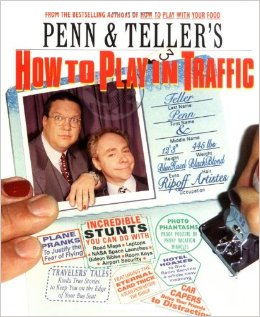 They are not Eastern Gurus nor academic scholars. They label themselves as two “eccentric guys who have learned how to do a few cool things”, but they are a couple of truly subversive counter-culture tricksters: they are the magic duo Penn & Teller. “The Five Cent Koan” has been published on their book Penn & Teller’s How To Play in Traffic, a stunning collection of magic tricks totally out-of-the-box. The instructions are simple: Take out a nickel. [...] Now find a moving sidewalk. [...] Place your nickel on the black handrail that moves with the sidewalk. Stay where you are, and watch your coin glide away. As it retreats, think to yourself: My nickel is vanishing into oblivion. [...] Wait at least sixty seconds [...] Then get on the moving sidewalk yourself. Ride it to the end. When you get off, look around. Search the floor. The nickel will be gone. (4) That’s all. But the tiny experience fosters comments upon the possible reactions by Aristotle, Sir Arthur Conan Doyle, and even Marie Curie — dealing with the eternal debate between Faith and Reason. Then you are invited to think about that horrible kid that in the schoolyard, decades ago, punched you in the shoulder until you were ready to kill him. At the time it seemed like the end of your life. But now, where has he gone? He rode the black handrail into oblivion. Just like the coin, he went farther and farther away until he was no longer part of your world. (5) But then that coin becomes the occasion of meditating upon Getting and Losing. When you put your nickel on the handrail, you resigned yourself to the fact that it was gone, spent on a frivolous philosophical experiment. (6) But if you find it again at the end of the sidewalk, then you are allowed to feel richer than before! You may congratulate with yourself for being in the right place at the right time. So you have a no-lose situation: If the coin is gone, you win a mystery. If the coin is there, you win the envy of your fellow travelers. (7) If all books about magic tricks were like this... _________________ (1) Penn & Teller, Penn & Teller’s How To Play in Traffic, The Berkley Publishing Group, New York 1997, p. 187. (2) Ibidem. (3) Ibidem. (4) Ibidem. (5) Penn & Teller, p. 190. (6) Penn & Teller, p. 192. (7) Ibidem. Magic & TimePast, Present and Future in three magic experiences Posted on tuesday 5 august 2014, 3 days before scifoo14 • Written by Mariano TomatisBeing a magician does not require a stage, a strange hat or a bag full of tricks. Daily life offers lots of opportunities to create unusual (or even impossible) situations, breaking into reality with apparently magical events. To define such a fascinating task, Ferdinando Buscema coined the expression Magic Experience Design. In order to make you appreciate its potential, here are three striking examples, involving the concept of Time and offering food for thought about Past, Present and Future. The Past: What is the feeling of being children? Since a few months, the reprint of the Codex Seraphinianus is available in bookstores: it is one of the most fascinating and mysterious books ever conceived. Created by Luigi Serafini between 1976 and 1978, it has the appearance of a bizarre 360-pages encyclopedia. Its handwriting, however, is incomprehensible: Serafini used an elegant script language which does not reproduce any existing or imaginary idiom. 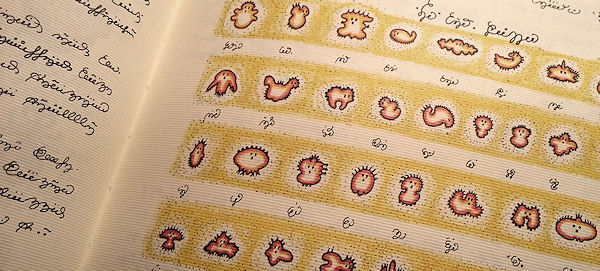 Images of surrealist taste offer the reader some vague clue about the content of the book, without solving any mystery — and indeed, making it more dense. The Codex offers a magic experience, fulfilling the wish of reviving a typical feeling of childhood. As Serafini wrote: I want the reader flipping through the “Codex Seraphinianus” to be like […] a child who has not yet learned to read, but rejoices in dreams or the fantasies the images suggest. (1) The most recent edition includes another paragraph on this: Do you remember how, when we were children, we’d leaf through picture books and, pretending we could read before the children older than us, fantasize about the images we saw there? Who knows, I thought to myself, perhaps unintelligible and alien writing could make us all free to once again experience those hazy childhood sensations. (2) The Present: the right pace to savor it During the Christmas season, the city of Turin turns on the Luci d’Artista (Artists’ Lights) — light installations decorating the main streets and squares. Luigi Mainolfi’s work extends along via Lagrange and tells — through a number of neon lights — a story written with Guido Quarzo: “Luì and the art of strolling into the woods.” (3) 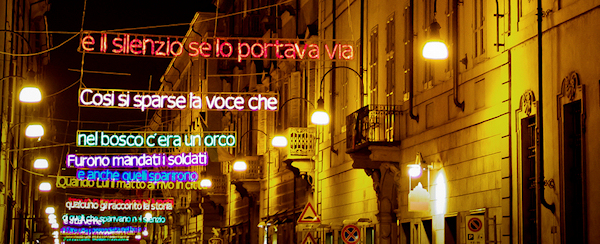 If you read the story on a page (by clicking here), you will live a kind of experience. If you walk through via Lagrange from the beginning to the end, it will take about 15 minutes to read the same words. In the meantime, your look will cross the passers-by, will fall on a shop window and you will be distracted by the elegant architecture of a building. The act of reading will be fragmented: although the words are exactly the same, the eye will not be able to catch all of them at a single glance. The pace will be dictated by the speed of your steps, and the mental effort to connect each sentence to the previous one will be hindered by a thousand surrounding stimuli. The story told by Guido Quarzo is — even on paper — a surreal sequence of images, sounds and situations. And if it is already difficult to hold it together during a conventional reading, the fragmentation added by Mainolfi is an extra element of disorientation, offering those who go along the Turinese road a suggestive magic experience: rationality lacks any explanatory power, and the reader is forced to be lulled by the slow rhythms and hypnotic tunes orchestrated by whales, ogres, elephants and rattles. “Luì and the art of strolling into the woods” invites you to dive into the Present with the slow pace imposed by a full awareness, rewarding an open attitude towards the surreal and frustrating any attempt to deconstruct the mechanism by rational means. But it is just a humble invitation: those in a hurry can spare themselves all the magic, clicking on the link above and devouring the story in a few seconds. The Future: What is the feeling of being old?  It is not easy, for those who are young, to empathize with the elderly and guessing the effects of the physical limitations produced by aging. In order to enable students of geriatrics to immerge themselves for a few hours in the feeling of being elderly, Wolfgang Moll has created a magical aging suit (on sale here): it is called GERT and it is a dress whose structure simulates a series of obstacles related to the Third Age. Opaque lenses simulate problems with vision, noise-canceling headset impose hearing restrictions, stiff joints reproduce the obstacles in the mobility of the head, joints and gripping ability. The weight of the suit simulates the loss of strength and coordination skills. Some expansions of the suit enable other limitations typical of aging: the “trembling simulator” simulates the senile tremor, the “overshoes” force to maintain unsteady gait, the “hemiparesis simulator” simulates a one-sided paralysis. The magic experience of living in advance old age has extraordinary effects on young people, encouraging empathy towards the elderly. Research conducted at the University of Würzburg (published here) showed that the ability to empathize with 125 students rose to 90% after wearing the suit for an hour and a half. _________________ (1) Frontpiece of the first edition of Luigi Serafini, Codex Seraphinianus, Franco Maria Ricci, 1981. (2) Luigi Serafini, Decodex, Rizzoli, Milan 2013, p. 9. (3) Guido Quarzo and Luigi Mainolfi, Luì e l’arte di andare nel bosco, Hopefulmonster, Florence 2002. Magic & TruthMaking things look like magic by any means necessary Posted on wednesday 30 july 2014, 9 days before scifoo14 • Written by Mariano TomatisI’m an Italian magician with a degree in Computer Science. Ioan Petru Couliano helped me to find the red thread between my two worlds, defining Technology as a democratic Magic that allows everyone to enjoy the extraordinary capabilities of which the magicians used to boast. Electricity, rapid transport, radio and television, the airplane, and the computer have merely carried into effect the promises first formulated by magic. (1) But the relationship between Magic and Technology may be extremely complex. Paris, 1837 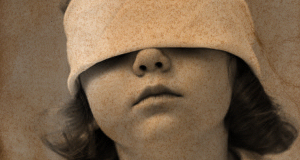 Claude Burdin offers 3,000 Francs to anyone who can demonstrate the ability of reading while blindfolded. A 11-years old girl from Montpellier reads a page from a book opened at random. Checking the bandage covering her eyes, the judges discover two little holes. James Randi would label it as a fraud. I prefer to say that it looks like magic, thanks to the technology of the two holes. The place you are, now
London, 2014 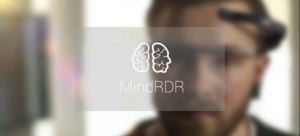 A digital studio has developed an app based on a sensor hooked up with Google Glasses. It detects changes in the electrical signals emanating from the brain, letting the user taking photos with the power of the mind. That is still a pretty crude device, but I prefer to say that it looks like magic and it is still closer to real mind reading. Three stories, with three degrees of “Truth”, all revolving around the fundamental topic of my professional life: making things look like magic by any means necessary. _________________ (1) Ioan Petru Couliano, Eros and Magic in the Renaissance, University of Chicago Press, Chicago 1987, p. 104. |
 Science Foo Camp (or “Sci Foo”) is an invitation-only gathering organized by Digital Science, O'Reilly Media, and Google, with support from Nature. The 9th edition of Sci Foo takes place on 8-10 August 2014 at the Googleplex in Mountain View, CA. Lord Martin Rees has defined it as “a sort of mini Woodstock of the Mind”. Participants include researchers, writers, educators, artists, policy makers, investors, and other thought leaders, all doing groundbreaking work in diverse areas of science and technology.
Science Foo Camp (or “Sci Foo”) is an invitation-only gathering organized by Digital Science, O'Reilly Media, and Google, with support from Nature. The 9th edition of Sci Foo takes place on 8-10 August 2014 at the Googleplex in Mountain View, CA. Lord Martin Rees has defined it as “a sort of mini Woodstock of the Mind”. Participants include researchers, writers, educators, artists, policy makers, investors, and other thought leaders, all doing groundbreaking work in diverse areas of science and technology.
 Invite the person next to you to imagine of hiding a coin in the hand. It may be a five-cent or a ten-cent coin. Announce that you are able to read minds. Ask that person to multiply its value by 17. If the reaction is… «Ok!», they are hiding the ten-cent. If the reaction is… «Oh, wait, ehm…», they are hiding the five-cent. Because multiplying by 10 is faster than by 5. A parapsychologist would label it as a dirty trick. I prefer to say that it looks like magic, thanks to a specific knowledge about a mental process. A bit closer to real mind reading.
Invite the person next to you to imagine of hiding a coin in the hand. It may be a five-cent or a ten-cent coin. Announce that you are able to read minds. Ask that person to multiply its value by 17. If the reaction is… «Ok!», they are hiding the ten-cent. If the reaction is… «Oh, wait, ehm…», they are hiding the five-cent. Because multiplying by 10 is faster than by 5. A parapsychologist would label it as a dirty trick. I prefer to say that it looks like magic, thanks to a specific knowledge about a mental process. A bit closer to real mind reading.